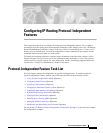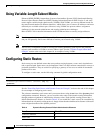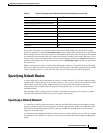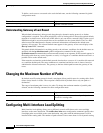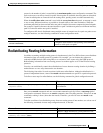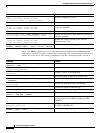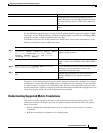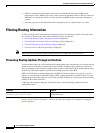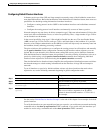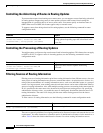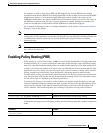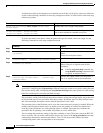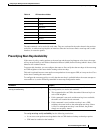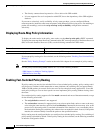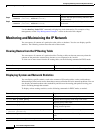
Configuring IP Routing Protocol-Independent Features
Filtering Routing Information
IPC-371
Cisco IOS IP Configuration Guide
Configuring Default Passive Interfaces
In Internet service provider (ISP) and large enterprise networks, many of the distribution routers have
more than 200 interfaces. Before the introduction of the Default Passive Interface feature, there were two
possibilities for obtaining routing information from these interfaces:
• Configure a routing protocol such as OSPF on the backbone interfaces and redistribute connected
interfaces.
• Configure the routing protocol on all interfaces and manually set most of them as passive.
Network managers may not always be able to summarize type 5 link-state advertisements (LSAs) at the
router level where redistribution occurs, as in the first possibility. Thus, a large number of type 5 LSAs
can be flooded over the domain.
In the second possibility, large type 1 LSAs might be flooded into the area. The Area Border Router
(ABR) creates type 3 LSAs, one for each type 1 LSA, and floods them to the backbone. It is possible,
however, to have unique summarization at the ABR level, which will inject only one summary route into
the backbone, thereby reducing processing overhead.
The prior solution to this problem was to configure the routing protocol on all interfaces and manually
set the passive-interface router configuration command on the interfaces where adjacency was not
desired. But in some networks, this solution meant coding 200 or more passive interface statements.
With the Default Passive Interface feature, this problem is solved by allowing all interfaces to be set as
passive by default using a single passive-interface default command, then configuring individual
interfaces where adjacencies are desired using the no passive-interface command.
Thus, the Default Passive Interface feature simplifies the configuration of distribution routers and allows
the network manager to obtain routing information from the interfaces in large ISP and enterprise
networks.
To set all interfaces as passive by default and then activate only those interfaces that need to have
adjacencies set, use the following commands beginning in global configuration mode:
See the section “Default Passive Interface Example” at the end of this chapter for an example of a default
passive interface.
To verify that interfaces on your network have been set to passive, you could enter a network monitoring
command such as the show ip ospf interface EXEC command, or you could verify the interfaces you
enabled as active using a command such as the show ip interface EXEC command.
Command Purpose
Step 1
Router(config)# router protocol
Configures the routing protocol on the network.
Step 2
Router(config-router)# passive-interface default
Sets all interfaces as passive by default.
Step 3
Router(config-router)# no passive-interface
interface-type
Activates only those interfaces that need to have
adjacencies set.
Step 4
Router(config-router)# network network-address
[options]
Specifies the list of networks for the routing process.
The network-address argument is an IP address
written in dotted decimal notation—172.24.101.14,
for example.



